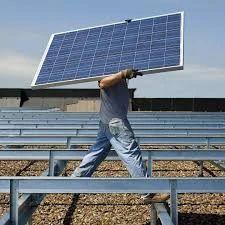ground based solar array
Exploring Ground-Based Solar Arrays Harnessing Solar Energy for a Sustainable Future
As concerns about climate change and energy sustainability continue to grow, the need for renewable energy sources has never been more pressing. Among various renewable energy technologies, solar energy stands out as one of the most potent and accessible solutions. Ground-based solar arrays play a crucial role in capturing solar energy and converting it into electricity, making them a focus of both research and investment in the quest for a sustainable future.
Understanding Ground-Based Solar Arrays
Ground-based solar arrays consist of photovoltaic (PV) panels installed on the ground rather than on rooftops or other structures. These installations are typically deployed in large open areas, such as fields or deserts, where sunlight is abundant and uninterrupted. The basic principle behind solar arrays involves converting sunlight directly into electricity through the photovoltaic effect, where solar cells generate direct current (DC) electricity when exposed to sunlight.
The scalability of ground-based solar arrays is one of their significant advantages. They can range from small community solar gardens that serve local neighborhoods to massive solar farms that generate hundreds of megawatts of power for large-scale electricity grids. This versatility allows for a wide array of applications and makes solar energy a flexible solution for different energy needs.
Environmental Benefits
The environmental benefits of ground-based solar arrays are substantial. First and foremost, they produce electricity without emitting greenhouse gases during operation, making them a key player in efforts to reduce carbon footprints. By replacing fossil fuels with solar energy, countries can significantly decrease their reliance on non-renewable resources, thus mitigating air pollution and its detrimental effects on public health.
Moreover, the land used for solar arrays can often be dual-purposed. Agricultural practices can coexist with solar installations, leading to a concept known as agrivoltaics. This practice allows farmers to grow crops beneath solar panels, optimizing land use and maintaining productivity while reaping the benefits of renewable energy.
Economic Considerations
ground based solar array

The economic implications of ground-based solar arrays are equally significant. The cost of solar technology has decreased dramatically over the past decade, making it increasingly competitive with traditional energy sources. Many governments offer incentives such as tax credits and grants to promote investment in solar energy, leading to job creation in manufacturing, installation, and maintenance.
As countries worldwide transition toward renewable energy sources, investing in solar technology presents not only an opportunity for energy independence but also economic growth. Studies indicate that large-scale solar farms create jobs during both the installation phase and ongoing operations. Moreover, as the market continues to grow, the demand for skilled workers in the renewable energy sector is likely to rise, providing further economic benefits.
Technological Advancements
Technological advancements are continually enhancing the efficiency and effectiveness of ground-based solar arrays. Innovations in solar panel design, tracking systems that follow the sun’s path, and energy storage solutions are improving energy capture and application. These advancements help maximize the amount of solar energy converted into electricity, making solar more reliable and flexible.
Bifacial solar panels, for instance, can harvest sunlight from both sides, significantly increasing energy output. Meanwhile, improvements in energy storage technology, such as lithium-ion batteries, are enabling solar energy to be stored for use during periods of low sunlight, thereby enhancing reliability.
Future Prospects
Looking ahead, the future of ground-based solar arrays appears bright. As the global community embraces renewable energy to combat climate change, the demand for solar energy is expected to soar. Initiatives aimed at expanding solar infrastructure and improving technology will likely continue, paving the way for broader adoption.
In conclusion, ground-based solar arrays represent a fundamental component of the shift toward renewable energy. They offer numerous environmental and economic advantages, with the potential to transform energy production on a global scale. As technology advances and society recognizes the importance of sustainability, ground-based solar arrays are poised to play a pivotal role in building a cleaner, greener, and more resilient future.
-
Unlocking Energy Freedom with the Off Grid Solar InverterNewsJun.06,2025
-
Unlock More Solar Power with a High-Efficiency Bifacial Solar PanelNewsJun.06,2025
-
Power Your Future with High-Efficiency Monocrystalline Solar PanelsNewsJun.06,2025
-
Next-Gen Solar Power Starts with Micro Solar InvertersNewsJun.06,2025
-
Harnessing Peak Efficiency with the On Grid Solar InverterNewsJun.06,2025
-
Discover Unmatched Efficiency with the Latest String Solar InverterNewsJun.06,2025







